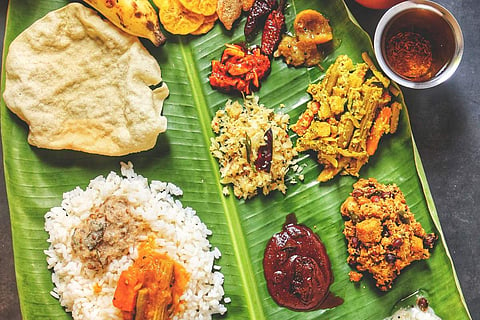
- LIFESTYLE
- FASHION
- FOOD
- ENTERTAINMENT
- EVENTS
- CULTURE
- VIDEOS
- WEB STORIES
- GALLERIES
- GADGETS
- CAR & BIKE
- SOCIETY
- TRAVEL
- NORTH EAST
- INDULGE CONNECT

In the late 1300s, a group of Nattukotai Chettiars—enterprising tradesmen backed by the Chola kings—were making their way home from Myanmar on ships laden with teak and rubies. After two weeks of battling the black waters of the Burmese sea, they were greeted by a stretch of white sand which should have housed their homes. There was deathly silence instead of the laughter of their children; a tsunami had swallowed their world. But they were Chettiars. While they might have lost their home, they had not lost their grit. They switched sides and offered allegiance to the Pandyas, who were more than happy to gift them land—Karaikudi—far from the ocean.
Lying in the Sivagangai district, deep in the heart of Tamil Nadu, Karaikudi is a two-hour drive east of Madurai, and 60 km from the closest waves. As one approaches the outskirts, black and red flags flit wildly in the breeze and guide one to The Bangala, a heritage hotel. Renowned for its home kitchen, the property has been with the family for almost 100 years. Dust motes dance on sun rays streaming through windows, a portal really, into a Merchant Ivory film, and an epicurean oasis where all one does is indulge the taste buds. And that was precisely what owners Visalakshi Ramaswamy and Meenakshi Meyyappan had envisioned when they decided to revive the old Senjai Bangala that served as a clubhouse for the male members of Meenakshi’s family (the famous Meyyappan Settiappa Meyyappa Meyyappa family) in 1999 and transform it into The Bangala—synonymous with Chettinad cuisine. Meenakshi was in her mid60s when she opened the doors to the heritage resort. Says the 86-year-old, “When we opened, the chefs were from our homes and the food was simple. Our first guests said that they had never been served home-cooked meals at any hotel, and that inspired us to maintain it as it is.”
The place today is a gold standard for Chettiar cuisine and counts among its illustrious patrons, writer William Dalrymple. The dining area opens out into the courtyard, as you sit in front of glistening banana leaves with the staff scurrying to serve you.
Meenakshi says, “I still have not been able to convince my staff that most people like to have a leisurely meal. Maybe, eating quickly and getting up is a Tamilian, or should we say, a Dravidian trait.” One starts with a couple of kootus (a medley of vegetables tempered with lentils) followed by a couple of poriyals (spicy par-boiled vegetables), and then a pachadi, a curd-based curry. The mixed vegetable mandi is unique to Chettinad cuisine and usually comprises okra or capsicum with chickpeas, or shallots with green chillies, cooked in tamarind and mixed with arisi (rice).
Other sides include corn cutlets, some crunch in the form of green or yellow banana chips or papad and two rice dishes. There’s also a fish curry and a soya bean kurma for vegetarians, besides a pineapple curry, a perfectly balanced creamy yet tarty thaiyir (curd), drumstick sambar and almond halwa. The flavours are subtle and well-rounded, allowing the natural texture and taste of every ingredient to shine. Though there is the famous chicken Chettinad pepper masala—a house favourite—on the menu, it is far from being a pot of spiciness.
Meenakshi, who co-authored two coffee table books, The Bangala Table, Flavours and Recipes from Chettinad and The Mansions of Chettinad, says, “Our use of spices is subtle; our food is never meant to be fiery.”